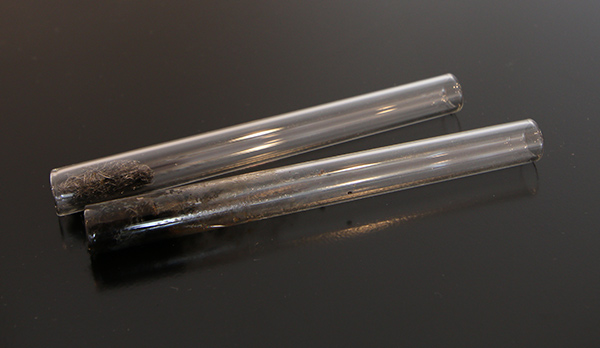
Crack Addiction
Crack earned a reputation as a dangerous street drug in the 1980s and 1990s when the so-called “crack epidemic” surged through metropolitan areas across the United States. Although the public outcry against crack has since been redirected toward other illegal substances, the drug has by no means disappeared, with an estimated 432,000 Americans abusing crack in 2016. And the dangers of the drug have not diminished, either -- it remains accessible, highly addictive and potentially lethal. Although there are many stereotypes about crack users due to the widespread media coverage, these images no longer hold true. Crack affects people of all ages, races, genders and economic standing -- what once was an inner-city threat has now spread beyond urban streets and can be found nearly anywhere across the country. If you or someone close to you is using or addicted to crack, it’s important to seek treatment as soon as possible -- compassionate, holistic therapy like the programs we offer at Tree House Recovery could very well save a life.
What is Crack?
Crack, or crack cocaine, is a form of cocaine that has been chemically altered with the intent of smoking the drug. Cocaine powder is broken down using heat, water and baking soda, a process that creates a rock-like substance that can then be used or distributed as “crack rocks.” While the byproduct of this chemical reaction is typically a purer form of cocaine than cocaine powder, distributors will usually cut crack rocks with a substance that is similar in appearance so that they can make more of a profit. These additions can pose a great danger for users since distributors have been known to cut crack with harmful ingredients and there is often no way of knowing beforehand what a particular dose of crack contains. Smoking crack cocaine delivers a fast, intense high since the ability to smoke the drug allows it to be absorbed into the bloodstream very quickly. However, the high from a single hit of crack only lasts about five to ten minutes before users experience a drastic comedown as the drug leaves their system. To maintain the high, many users will smoke again before the effects wear off. This is a risky practice, though, as repeated use quickly builds a tolerance and dependence. Additionally, the eventual comedown can be extremely hard on the brain and body if crack is used in this manner.
How Does Crack Affect the Brain?
The high from using crack is immediate and very pleasurable, bringing feelings of euphoria, alertness, heightened sensations and lowered social inhibitions. Those who are high on crack are typically excited, positive and animated. The main component in a crack high is the release of a chemical in the brain called dopamine, which plays a role in a variety of brain functions including feelings of reward, pleasure and mood modulation. If you are doing an activity you enjoy, the “rush” that you feel is likely orchestrated by dopamine in the brain. When you use drugs like crack, that rush is recreated artificially. Even though you aren’t doing anything that would typically bring you pleasure, you can feel as though you are. This is problematic, however, because your brain begins to think of crack as an enjoyable, rewarding activity. You can start to crave crack the same way you would crave eating foods you like or being around people you love. What’s more, the amount of dopamine that rushes the brain during a crack high is much more intense than would typically be created naturally. With long-term or continuous use, the cells in your brain that process dopamine can become accustomed to the artificial levels of dopamine. Over time, they may no longer respond to natural dopamine levels with enough power to make you feel happy. You may notice that things that once made you feel good no longer have the same effect because your brain needs the rush of drugs. This is a slippery slope to drug abuse and addiction because living day-to-day life becomes ever more difficult as you no longer have the ability to feel positive or happy without crack.
Signs of Crack Addiction
If you suspect that a friend or family member is abusing or addicted to crack, there are a few signs to watch for that might suggest use of the drug. First, you may notice behavioral changes, either while they are high or as they become dependent on the drug. Someone who is high on crack may act manically or unpredictably, perhaps talking too quickly, seeming inappropriately upbeat or becoming easily distracted. You may also notice some physical signs such as dilated pupils, shortness of breath or twitching. Someone who is dependent on crack may begin to act in strange ways as they experience the struggles of drug abuse. These broader signs of dependence or addiction might include:
- Intense mood swings
- Loss of interest in former habits or hobbies
- Depressive episodes between highs
- Aggressive behavior
- Unreliability
- Burn marks or blisters on the fingers or lips
- Financial difficulties
- Legal trouble
Whether you recognize these signs in yourself or in someone close to you, if they sound familiar then it is time to seek help. When crack addiction takes hold, it can lure the user to places that their sober self would never want to go. Crack addiction leads people to ruin careers, relationships, finances and more as they abandon their former lives in search of the next high. Professional treatment is the best way to constructively detox and recover from addiction so that you can start fresh, free from the grip of addiction to crack cocaine.

PARAPHERNALIA
Crack is often smoked out of a short hollow glass tube. Steel wool is put in one end to hold the drug.

unmanageability
As crack addiction progresses, users lose their ability to manage everyday responsibilities.

SLEEP HABITS
Crack keeps users awake for long periods of time. These stints are usually followed by excessive sleep.

MOOD SWINGS
Crack use creates mood swings. Users often fluctuate between intense energy and depression.
Treatment for Crack Addiction
Crack addiction is very treatable and manageable with the right approach. A combination of therapy and intentional steps toward sobriety can help those addicted to crack move beyond their drug use. At Tree House Recovery, we focus on providing holistic, individualized therapies including addiction education, talk therapy, yoga and meditation, writing therapy and fitness therapy. It is our goal to heal the mind, body and spirit as one, giving each of our clients the strength they need to find a full recovery. We have found that our treatment model has great success because we not only heal addiction, we also impart the tools our clients need to manage their addiction on their own. We replace self-destructive behaviors with healthy habits and strong life skills, rebuilding confidence and independence in a safe and supportive environment.
Contact Tree House Recovery PDX
Tree House Recovery is a men’s addiction treatment center located in Portland, Oregon. Our mission is to provide holistic, sustainable recovery treatment that is accessible to anyone who needs it. We can treat addiction to a variety of substances including crack cocaine, alcohol and more. To learn more about our programs and to find out if they might be the right fit for you or your loved one, contact us as soon as you are ready. Don’t hesitate to reach out for help -- call our admissions team today at (503) 850-2474.





